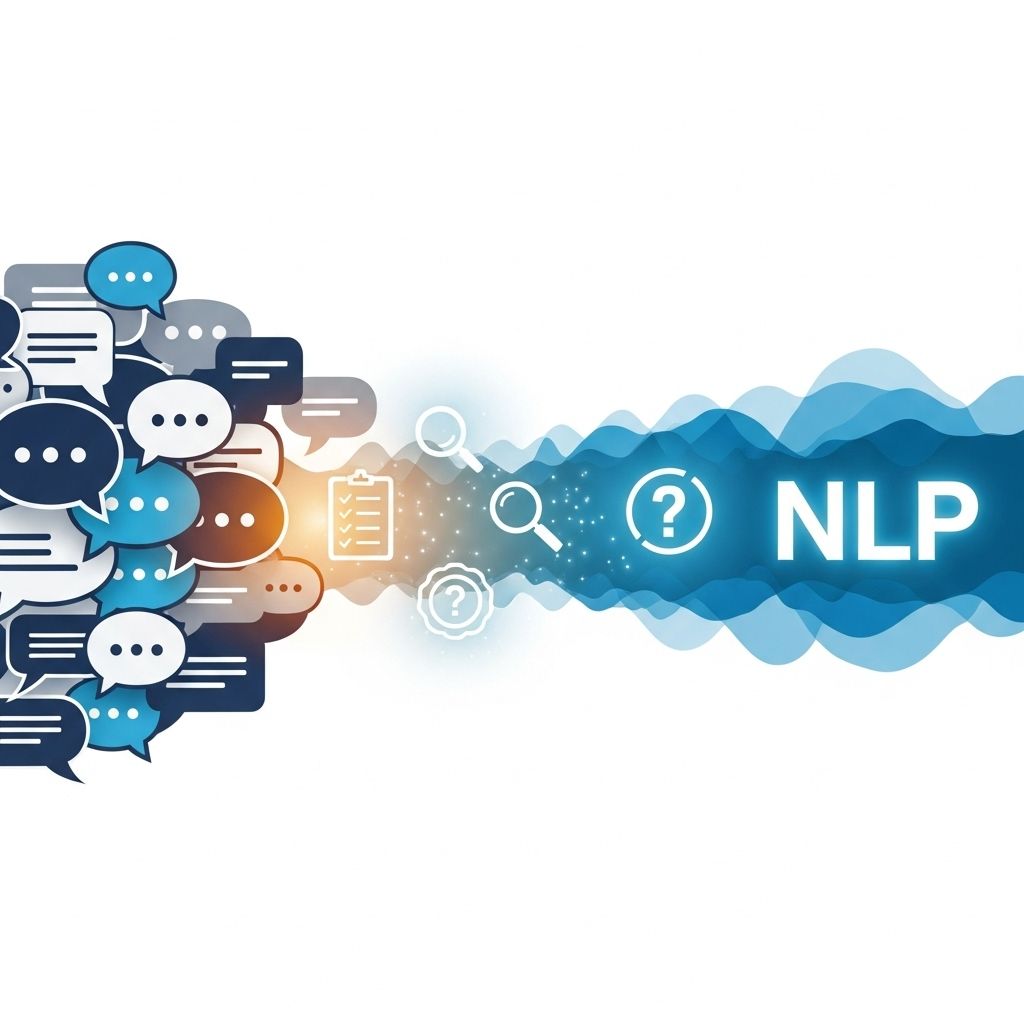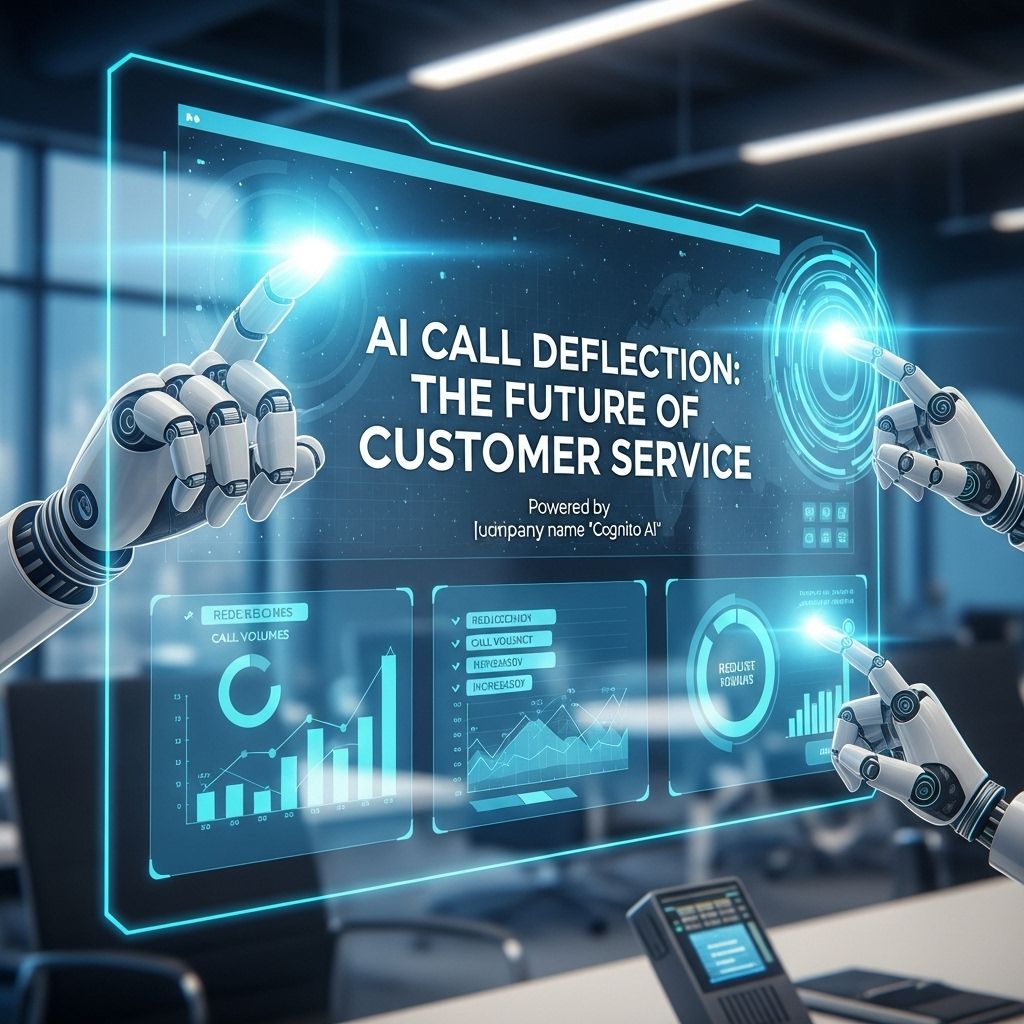Transform Customer Service with NLP Deflection
Discover how NLP deflection can revolutionize customer service by enhancing efficiency and improving customer satisfaction.

In today’s fast-paced digital environment, customer expectations are higher than ever. They demand quick responses, tailored experiences, and a seamless integration of technology into customer service interactions. Natural Language Processing (NLP) deflection is emerging as a pivotal solution to these challenges, transforming how businesses engage with customers. By leveraging advanced NLP techniques, organizations can streamline their customer service operations, reduce volume, and enhance satisfaction levels.
Table of Contents
Understanding NLP and Its Role in Customer Service
Natural Language Processing is a branch of artificial intelligence that focuses on the interaction between computers and human language. It enables machines to understand, interpret, and respond to human language in a way that is both meaningful and useful.
The Mechanics of NLP
NLP involves several key components that allow it to analyze and generate human language:
- Tokenization: The process of breaking down text into smaller components like words or phrases.
- Sentiment Analysis: Assessing the emotional tone behind a series of words to understand the attitude of the speaker.
- Named Entity Recognition: Identifying and classifying key entities (like names, organizations, locations) within the text.
- Intent Recognition: Determining the intent behind a user’s inquiry or command.
Benefits of NLP Deflection in Customer Service
Implementing NLP-powered solutions in customer service can yield numerous benefits, enhancing both operational efficiency and customer experience.
1. Reducing the Volume of Customer Inquiries
One of the primary advantages of NLP deflection is its ability to reduce the number of inquiries that escalate to human agents. By automating responses to common questions and issues, businesses can significantly lower their service costs.
Common Use Cases for NLP Deflection:
- Providing instant answers to FAQs.
- Guiding users through troubleshooting steps.
- Assisting in navigation and usage of the product or service.
2. Enhancing Customer Experience
Customers appreciate timely and relevant responses. NLP deflection allows for a more personalized interaction that meets customer needs more effectively.
Key Features Enhancing Customer Experience:
- 24/7 Availability: Customers can receive assistance at any time, without waiting for business hours.
- Personalized Responses: Leveraging past interactions, NLP can tailor responses to individual customers.
- Consistency: Automated responses ensure that customers receive the same information consistently.
3. Data-Driven Insights
Using NLP deflection tools allows companies to gather valuable data that can inform business decisions. By analyzing customer interactions, organizations can identify trends, preferences, and potential issues.
Important Metrics to Monitor:
- Response time to customer inquiries.
- Customer satisfaction scores.
- Commonly asked questions and their resolution rates.
Implementing NLP Deflection: Best Practices
While the benefits of NLP deflection are substantial, successful implementation requires strategic planning and execution.
1. Define Clear Objectives
Before integrating NLP solutions, it’s vital to have a clear understanding of what you want to achieve. This could include:
- Reducing response times.
- Improving customer satisfaction.
- Minimizing operational costs.
2. Choose the Right Tools
There are various NLP tools available, each with different capabilities and strengths. Some popular options include:
| Tool | Key Features | Best For |
|---|---|---|
| IBM Watson | Robust analysis and integration capabilities | Large enterprises |
| Google Dialogflow | Easy to set up, integrates with Google services | Small to medium businesses |
| Microsoft LUIS | Powerful intent recognition and entity extraction | Flexible applications |
3. Monitor and Optimize
After implementation, it’s crucial to continuously monitor the system’s performance and make adjustments based on real-time data. This involves:
- Regularly reviewing interaction data for insights.
- Adjusting NLP models based on customer feedback.
- Ensuring that automated responses remain accurate and relevant.
Challenges of NLP Deflection
While NLP deflection offers a range of advantages, it’s essential to be aware of potential challenges that might arise during implementation.
1. Understanding Context
NLP systems may struggle with understanding context, especially in complex inquiries. This can lead to misinterpretations and unsatisfactory responses.
2. Handling Ambiguity
Human language is often ambiguous. Developing NLP models that can accurately handle this ambiguity is a significant challenge.
3. Maintaining Human Touch
Despite the advancements in technology, some customers still prefer human interactions. It’s vital to maintain a balance and ensure customers can easily escalate to a human agent when necessary.
Conclusion
NLP deflection is revolutionizing the customer service landscape, providing businesses with a powerful tool to enhance efficiency, reduce costs, and improve customer satisfaction. By understanding its benefits, implementing best practices, and remaining aware of the challenges, organizations can successfully harness the power of NLP to elevate their customer service strategies. As technology continues to evolve, adopting NLP will not only be an advantage but a necessity in meeting the ever-changing demands of customers.
FAQ
What is NLP deflection in customer service?
NLP deflection refers to the use of Natural Language Processing technologies to automate and streamline customer service interactions, allowing businesses to efficiently address customer inquiries without human intervention.
How can NLP deflection improve customer satisfaction?
By providing quick and accurate responses to customer queries, NLP deflection enhances the overall customer experience, reducing wait times and improving satisfaction rates.
What are the benefits of using NLP in customer service?
Benefits of using NLP in customer service include increased efficiency, lower operational costs, 24/7 availability, and the ability to handle a higher volume of inquiries simultaneously.
Can NLP deflection handle complex customer queries?
While NLP deflection is highly effective for many common inquiries, it may struggle with complex or nuanced issues that require human empathy and understanding.
What industries can benefit from NLP deflection?
Industries such as e-commerce, telecommunications, finance, and healthcare can significantly benefit from NLP deflection by enhancing their customer service operations.
How do I implement NLP deflection in my customer service strategy?
To implement NLP deflection, businesses should assess their customer service needs, choose suitable NLP tools, and train the system using relevant data to ensure accurate and effective interactions.

